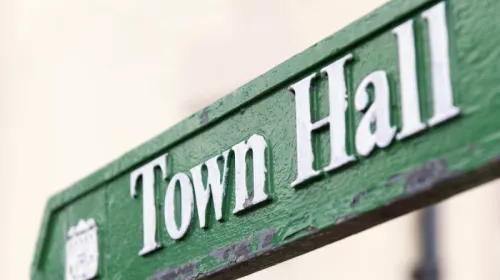A door of opportunity is opening in relationships with civic leaders across the country.
Churches in Greater Manchester are mapping food provision offered in every church in each of the ten boroughs of the region. Piloted in the summer, this is now being overlaid with a map of the postcodes of children on free school meals to reveal the “gaps” in our communities and is becoming the basis of a cross-sector funding offer for churches to provide some of the solutions to food security this coming winter.
It’s commonly said that William Beveridge’s report in 1942 which heralded the welfare state was the moment churches took a step back from community involvement to focus on the care of people’s souls. But today there is a clear invitation from civic leaders to the church, along with other community-minded organisations, to step up in partnership to help people start well, live well and age well in our communities.
Ten elected metro mayors, such as Sadiq Khan, Andy Burnham and Andy Street, who govern ten metropolitan areas of England between them (which make up nearly half the population), are seeking to bring a more collaborative leadership to regions and facilitate collaboration across civic boundaries and across sectors like business, charities and public services. The hope is not just stronger representation but better teamwork that liberates places from the silo effect that can limit every walk of life – in other words, fixing the body by connecting the parts much more effectively together to help people in our communities who are falling between the gaps.
So how does the church engage and develop effective collaboration with elected representatives?
Civic leaders and metro mayors from around the country have shared both their exasperations and their praise regarding working with churches. Based on their feedback, here are my five top tips on how churches can develop better relationships with elected representatives:
1. Work with the grain not against it. Some churches relate strongly to places outside of their local civic boundaries, for example a church planted by people from a different city or town centre which is close by but sits within a different civic boundary. As a result, the huge resources of time, talents and finance available for collaboration only in their local authority area are left largely untapped and underdeveloped.
2. Make it easier for civic leaders to collaborate. Civic leaders often say the work of churches is laudable but not always strategic. Rather than each church doing what they see fit (resulting in a collection of uncoordinated silos that don’t talk to each other), civic leaders just want one contact number and one commissionable network of churches. For example, Peterborough and Cambridgeshire are a Combined Authority. So, church leaders from each county have now agreed to represent their church unity movements in a Movement for Recovery conversation with their elected mayor, Nik Johnson.
3. Know where to start conversations. While some church leaders might develop strong relationships with civic leaders, best practice involves coming together as a borough-wide steering team. Try to develop a pattern of meetings with other church leaders, and work as a team to build a network of relationships. For example, there may be a church leader or charity leader who knows their ward councillor well and can help other churches connect with them. Church leaders must be informed about the range of civic leaders, which include:
- the mayor;
- the CEO;
- portfolio holders;
- director of public health or chair of clinical commissioning;
- the borough commander or chief constable of police;
- the CEO for the Chamber of Commerce;
- the Chair of Voluntary and Community Services;
- faith engagement officer;
- head of service for commissioning; and
- leads on housing and homelessness.
These relationships are also important in providing the information to pray well for our towns.
4. Understand your value and how to make your offer. Faith Action Audits, that highlight the social impact and economic value contributed by faith groups to communities, typically show that churches deliver up to 50% of all volunteering hours in a community. With buildings in every postcode, a church unity movement (a network of churches coordinated within a civic boundary) can bring a scale of work that is usually unparalleled. This includes breadth and depth as a network of networks, along with the intelligence that can be surveyed on the ground. Civic leaders also need partners that are ready to be commissioned and to contribute right now. They value humility and trusted relationships. From the start, they benefit from a research action approach, presenting real stories and statistics (using the local Voluntary Community Service research for example) and building a long-term relationship as part of a big conversation of recovery and renewal.”
5. Be more ambitious in making a big ask and being distinctive. Start by asking to meet regularly to talk about policy development, share intelligence from communities and then explore what collaboration looks like in terms of skills, time and finance. Make sure stories of what God is doing through the church are told. Indicate the intention of being in a strong relationship with key civic leaders and show you understand the times and know what is to be done (like the sons of Issachar in 1 Chronicles 12). Don’t hesitate to offer prayer and make sure they know you are committing to them pastorally and that you are committed to building a relationship.
Let’s make sure we walk through that door of opportunity. The next steps for the church are to improve collaboration so that we can love our neighbour in the middle of the cost of living crisis and prevent children and vulnerable adults from falling through the gaps this year.



